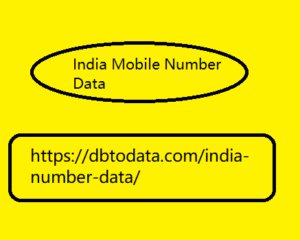Post by account_disabled on Mar 10, 2024 14:42:11 GMT 5.5
Afew weeks ago I participated in a face-to-face meeting with Nando Pagnoncelli (IPSOS) which allowed us to discuss opinion survey techniques. The idea was to highlight that traditional surveys and web mining are not opposing survey methodologies, but can be complementary, each with its advantages and disadvantages. The analysis of online conversations allows for spontaneous, real-time, rapid, continuous observation of opinions at reasonable prices. On the other hand, it cannot count on sample representativeness, an advantage of classic market research, and has difficulty interpreting ironic expressions.
In recent years, these problems have been joined by others that have India Mobile Number Data reduced a still useful methodology. When I started exploring the internet with the help of technology (see the first mapping of blogs and Twitter ) there was a freedom of analysis that is missing today. The current risk is the impossibility of observing in their entirety the phenomena that animate the network and therefore a significant part of humanity. A hard blow for commercial research, but even more so for academic research. Until a few years ago it was possible to analyze online conversations even through freely available tools. They were certainly limited, but they gave an idea of what was happening and the networks that were forming around specific topics. Companies, on the other hand, could pay and use more sophisticated tools for the most diverse marketing needs.

Then some events happened that radically transformed the scenario: the expansion of the web, the limitations of social media, the enrichment of formats. The first mapping of the Italian blogosphere (2010) The expansion of the web. As long as the internet was a galaxy made up of web pages, blogs, forums, newsgroups and the planet Twitter, data mining was within everyone's reach. All you needed was some basic knowledge of Python to scrape information and proceed with subsequent classifications. Then with the growth and success of Facebook things got complicated. Since the conversations there are private or semi-private because they take place on the user's profile/wall, it is not possible to detect them.
In recent years, these problems have been joined by others that have India Mobile Number Data reduced a still useful methodology. When I started exploring the internet with the help of technology (see the first mapping of blogs and Twitter ) there was a freedom of analysis that is missing today. The current risk is the impossibility of observing in their entirety the phenomena that animate the network and therefore a significant part of humanity. A hard blow for commercial research, but even more so for academic research. Until a few years ago it was possible to analyze online conversations even through freely available tools. They were certainly limited, but they gave an idea of what was happening and the networks that were forming around specific topics. Companies, on the other hand, could pay and use more sophisticated tools for the most diverse marketing needs.

Then some events happened that radically transformed the scenario: the expansion of the web, the limitations of social media, the enrichment of formats. The first mapping of the Italian blogosphere (2010) The expansion of the web. As long as the internet was a galaxy made up of web pages, blogs, forums, newsgroups and the planet Twitter, data mining was within everyone's reach. All you needed was some basic knowledge of Python to scrape information and proceed with subsequent classifications. Then with the growth and success of Facebook things got complicated. Since the conversations there are private or semi-private because they take place on the user's profile/wall, it is not possible to detect them.

